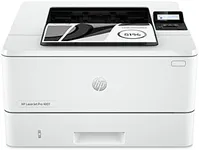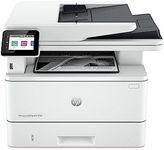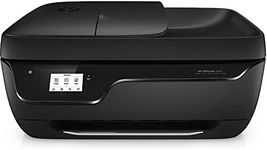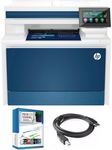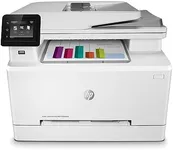Buying Guide for the Best HP Wired Printers
Choosing the right HP wired printer involves understanding your specific needs and matching them with the printer's features. Wired printers are often preferred for their reliability and consistent performance, especially in environments where wireless connectivity might be unstable. Here are some key specifications to consider when selecting an HP wired printer, along with explanations to help you make an informed decision.Print SpeedPrint speed, measured in pages per minute (PPM), indicates how quickly a printer can produce documents. This is important if you need to print large volumes of documents regularly. Printers with lower PPM (around 10-20) are suitable for home use or small offices with occasional printing needs. Medium PPM (20-40) is ideal for small to medium-sized businesses with moderate printing demands. High PPM (40+) is best for large offices or environments where high-volume printing is essential. Consider your typical print volume to choose the right speed.
Print QualityPrint quality is measured in dots per inch (DPI) and determines the clarity and detail of the printed documents. Higher DPI values (1200 DPI and above) are important for printing high-resolution images and detailed graphics, making them suitable for design work or professional presentations. Lower DPI (600 DPI) is generally sufficient for text documents and everyday printing tasks. Assess the type of documents you print most frequently to decide on the necessary print quality.
Paper HandlingPaper handling refers to the printer's capacity to manage different paper sizes and types, as well as its input and output tray capacities. If you print on various media types (like envelopes, labels, or cardstock), ensure the printer supports these formats. For high-volume printing, look for printers with larger input and output trays to reduce the frequency of paper reloading. Consider your typical print jobs and the types of paper you use to determine the right paper handling capabilities.
Connectivity OptionsWhile you are looking for a wired printer, it's still important to consider the types of wired connections available, such as USB, Ethernet, or parallel ports. USB connections are common for direct connections to a single computer, while Ethernet ports are essential for networked environments where multiple users need access to the printer. Ensure the printer has the appropriate connectivity options to match your setup and usage requirements.
Duty CycleThe duty cycle is the maximum number of pages a printer can produce in a month without experiencing wear and tear. This is crucial for understanding the printer's durability and suitability for your printing needs. Light-duty printers (up to 1,000 pages per month) are suitable for home use or small offices. Medium-duty printers (1,000-5,000 pages per month) are ideal for small to medium-sized businesses. Heavy-duty printers (over 5,000 pages per month) are necessary for large offices with high-volume printing. Estimate your monthly print volume to choose a printer with an appropriate duty cycle.
Cost of ConsumablesThe cost of consumables, such as ink or toner cartridges, is an ongoing expense that can add up over time. It's important to consider the cost and yield of these consumables when choosing a printer. High-yield cartridges may have a higher upfront cost but can be more economical in the long run if you print frequently. Research the availability and cost of consumables for the printer models you are considering to ensure they fit within your budget and usage patterns.
